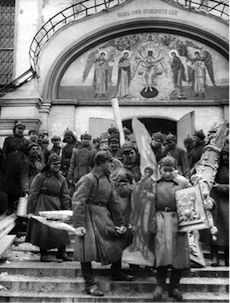

|
Mass Operations  The repression of the Church was part of the Great Terror The vast majority of Great Terror's victims were not Party members and their associates but ordinary citizens. They were the victims of the mass operations against 'kulaks' and nationalities between August 1937 and November 1938. The 'kulak operation' (Order 00447) accounts for half of all arrests (669,929) and more than half the executions (376,202) during 1937-38. The targeted groups ('former kulaks, criminals and other anti-Soviet elements') were divided into two: those to be shot; and those to be sent to labour camps for 8 to 10 years. Each district was given quotas for arrests but these could be increased by local officials. The district NKVDs would compile lists, arrests were made, interrogrations carried out, and new names added to the lists from the 'testimonies' obtained by torture. Most of the victims were former 'kulaks' and their families who had recently returned from special settlements and Gulag labour camps. Stalin was afraid that the country would be swamped by disgruntled and embittered 'kulaks' who might pose a threat in time of war. There were also large-scale 'national operations' - wholesale deportations of Soviet minorities who were deemed potential 'spies' in the event of war: Poles, Germans, Finns and Latvians, Armenians and Greeks, Koreans, Chinese, even Kharbin Russians, who had returned to the Soviet Union from Manchuria. Stalin's distrust of the Poles was particularly strong. He saw them as a potential fifth column of the 'semi-fascist' Polish state, which he feared would unite with Nazi Germany to attack the Soviet Union. As a result of the 'national operation' against the Poles, launched by Directive 00486 in August 1937, almost 140,000 people were deported from their homes, sent to labour camps, imprisoned or executed in 1937-38. |
© 2014 Orlando Figes | All Rights Reserved